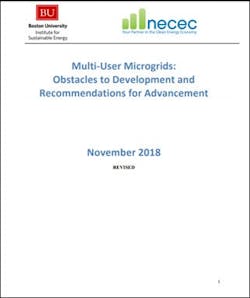Multi-user microgrids (MUMs) are an emerging approach to electricity service that allows neighboring customers to obtain greater resilience in electricity service, from a set of locallyinstalled distributed energy resources (DERs) of their own choice (sometimes including solar energy and energy storage), through joint participation in a power production and delivery system that can operate independently from the host electric utility.
To date, there are relatively few MUMs in operation. This is primarily because regulated utility service from the electricity grid has historically been adequate and cost-effective for most customers – and it is highly likely that this will remain largely true, so that MUMs will not become widespread anytime soon. However, with improving microgrid economics and increasing customer needs for resilience, there will be a growing number of situations in which MUMs will become viable. Even today, certain sets of customers find the benefits offered by MUMs to outweigh the additional costs.
Despite this, MUM activity has been extremely limited because of a number of significant barriers associated with implementing this novel business model. Exacerbating this, there is a dearth of comprehensive study on these barriers. Consequently, the goal of this research is to provide a first investigation into the barriers to MUM development and some early hypotheses on potential remedies that would facilitate MUM development when and where they might be a good solution – with a particular focus on the Northeastern U.S.
